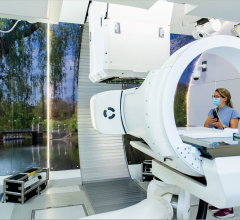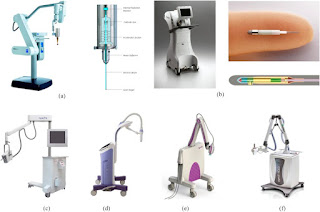Brachytherapy in Breast Operated by XOFT Machine
Brachytherapy in Breast Operated by XOFT Machine
Retrospective trial utilizing intraoperative radiation therapy with the Xoft System shows recurrence rates to be comparable to cornerstone TARGIT-A Trial at mean follow-up 4.6 years

October 2, 2018 — Breast cancer recurrence rates for patients treated with the Xoft Axxent Electronic Brachytherapy (eBx) System that complied with adjuvant medical therapy were comparable to those seen in the TARGIT-A study that used different technology. Outcomes of the long-term study, with a mean follow-up of 55 months, were published in the The American Journal of Surgery.1 To date, this study presents the most long-term research of intraoperative radiation therapy (IORT) using the Xoft System published in a peer-reviewed journal.
The retrospective study evaluated the American Society for Radiation Oncology (ASTRO) suitability criteria for accelerated partial breast irradiation (APBI) and the 21-gene recurrence score for prognostic and predictive benefit in IORT patients over a nearly five-year period. The research was led by Barbara Schwartzberg, M.D., FACS, conducted at the Rose Medical Center in Denver, and was not company sponsored.
The study reviewed results of 184 patients with breast cancer from November 2011 to January 2016 completing Institutional Review Board (IRB)-approved IORT protocol. Data included demographics, histopathology, the 21-gene recurrence score, adjuvant therapy, locoregional and distant recurrences, and breast cancer-specific survival. All patients were classified by ASTRO suitability criteria (suitable: 64 percent, cautionary: 30 percent, unsuitable: 6 percent), with a mean follow-up of 55 months.
Among the key findings:
- The recurrence rate for the 184 total IORT patients was 5.4 percent at a mean follow-up of 55 months; however, the recurrence rate was significantly lower – 2 percent – for the patients who complied with adjuvant medical therapy. The difference in recurrence rates between the group complying with versus declining adjuvant medical therapy was statistically significant;
- Adjuvant medical therapy was recommended to patients by their medical oncologists as a standard of care. Treatment included either chemotherapy and/or endocrine therapy as dictated by molecular subtype and, if appropriate, the 21-gene recurrence score; and
- These results are similar to the TARGIT-A study, which compared risk-adapted radiotherapy using single-dose targeted intraoperative radiotherapy (TARGIT) to fractionated external beam radiotherapy (EBRT) for breast cancer.2 When TARGIT was administered at the time of lumpectomy, the trial showed the five-year local recurrence rates were 2.1 percent for TARGIT versus 1.1 percent for EBRT. The study concluded that IORT is non-inferior to EBRT.
"IORT continues to hold tremendous promise in the treatment of early-stage breast cancer. As our study shows, using IORT with the Xoft System, combined with other post-operative therapy, proved extremely effective in addressing early-stage breast cancer and preventing recurrences," said Schwartzberg, lead author of the study and breast surgeon at Rose Medical Center. “Furthermore, we saw the Oncotype DX 21-gene recurrence score is useful in its predictive benefit when applied to IORT patients with invasive cancer. We believe that our results make a strong case for ASTRO suitability criteria for APBI to be amended to reflect patients' eligibility for IORT treatment, since they were not initially designed to provide guidelines for patients considering IORT.”
IORT with the Xoft System uses a miniaturized X-ray source to deliver one precise, concentrated dose of radiation to a tumor site at the time of breast-conserving surgery (lumpectomy). The treatment can be completed in as little as 8 minutes, making it possible for appropriately selected patients to replace six to eight weeks of post-operative EBRT with a single treatment.
The Xoft System is cleared by the U.S. Food and Drug Administration, CE marked, and licensed in a growing number of countries for the treatment of cancer anywhere in the body, including early-stage breast cancer, non-melanoma skin cancer, and gynecological cancers.
For more information: www.xoftinc.com
Reference
2. Vaidya J.S., Wenz F., Bulsara M., et al. Risk-adapted targeted intraoperative radiotherapy versus whole-breast radiotherapy for breast cancer: 5-year results for local control and overall survival from the TARGIT-A randomised trial. The Lancet, Nov. 11, 2013. https://doi.org/10.1016/S0140-6736(13)61950-9


 June 13, 2023
June 13, 2023























Comments